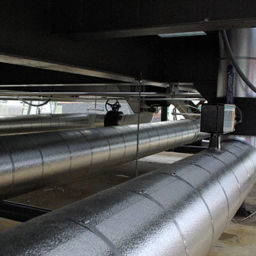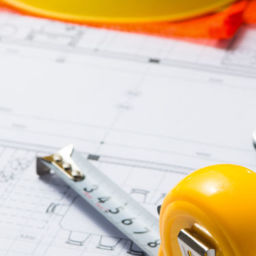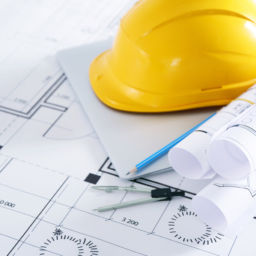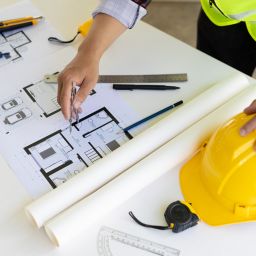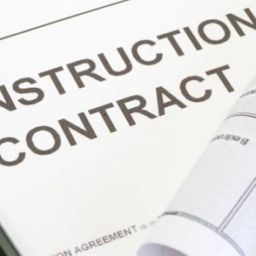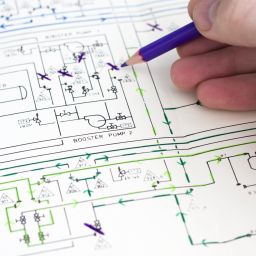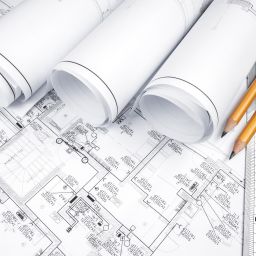Introduction
Ductwork is an essential part of the HVAC system in any building. Ducts can only function at their optimum when they are properly insulated. By insulating ductwork, you keep them from losing heat, condensing or sweating. In this article we will be talking about insulation estimating, more specifically, ductwork insulation estimation.
They also cause damage to the existing structure via condensation dripping on ceilings etc as well as lead to heat loss resulting in higher energy bills.
In this blog, we will discuss the importance of duct insulation and also share a few pointers that have helped us here at Chase Estimating improve our ductwork takeoff and ductwork estimating when it comes to insulation over the years.
What is Ductwork Insulation Estimating?
The process of covering the ducts with an insulating material that will help prevent heat loss or gain is ductwork insulation. Ducts can be insulated externally or internally.
Duct insulating materials are high-performing products made of mineral wool or fibreglass. They are used to protect all kinds of ductwork in the H&V system. These insulating materials can be in the form of rigid slabs or flexible wraps.
For insulation takeoff and insulation estimating purposes, it is essential that you have experience in knowing how and the insulation is installed in the first place so you can then go ahead and provide an accurate bill of quantities.
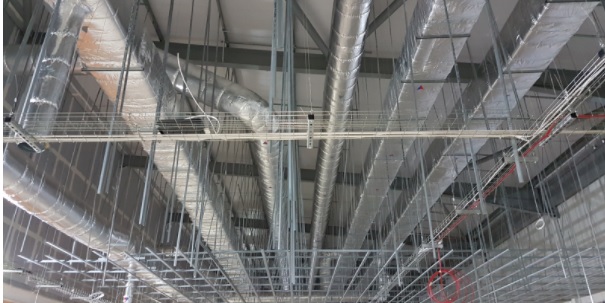
Why Insulate Ducts Insulation Estimating?
Apart from saving energy, duct insulation can also help with the following:
1. Ductwork carrying warm air passes through multiple rooms and delivers air via the grilles. Warm air in the ducts is likely to lose heat along its journey from the source to the destination.
Not only that, the temperature of the air in the ductwork won’t be the same as the temperature outside of the ductwork (i.e. room temperature). The difference in temperature causes condensation, resulting in droplets being formed on the surface of ductwork. These droplets may pool on the ceiling structure or on electrical equipment, ultimately damaging it.
In order to avoid this, the ductwork needs to be insulated to the appropriate specification. Not only ductwork but any other types of equipment like grille plenums, louvre plenums, etc, that tend to condensate must be insulated as well. The ductwork design also plays a crucial role in saving energy.
2. Ducts are situated in upper rooms or other unconditioned spaces where temperatures are unique in relation to that of the air in the conduits. It is therefore critical to insulate ductwork as insulation ensures that heat is not lost or gained when ducts or pipes in the H&V system cross paths. It’ll therefore help keep the cold air cool and heated air warm.
Duct insulation ensures that when the ducts pass through any unconditioned areas of a building, they do not lose or gain heat. Lagging ductwork also helps keep duct sweating at bay.
Types of Ductwork Insulation (Based on Application)
Based on application, duct insulation can be generally classified into the following types:
- Interior Ductwork Insulation
- Exterior Ductwork Insulation
- Internal Cladded Insulation
Now that we know why lagging ducts is important, I will share a few pointers on duct estimating and duct takeoff that we follow here at Chase Estimating.

Typical Ductwork Insulation Estimating Process
Job study
We at Chase Estimating start the process of ductwork takeoff by thoroughly studying the construction drawings i.e. the scaled drawings and schematic drawings. We carefully examine the ductwork design, as well. Our duct estimating team takes the time to understand the ventilation system in the job.
Our duct estimators also need to determine the following from the construction drawings and the specifications shared by the client, as they help with accurate mechanical insulation estimating.
- Duct estimators need to know the specification for the ductwork insulation material used.
- The level of finishing for the ductwork insulation required internally, in the plant room and externally?
- It will help duct estimators to know if it is just AHUs or if there are FCUs and internal MVHRs as well?
Our estimating team will collect all of this information beforehand, briefly if not thoroughly. It is only after this process that our estimators proceed with duct quantity takeoff and pricing.
Generally, most insulation estimators do not have the habit of studying the job first. They do not look into the details of the ductwork design or the construction drawings. Instead, they just dive in and make allowance for the design lines. The problem with this approach for mechanical insulation estimating is that tender drawings are not 100% correct a lot of the time.
There will be ductwork design mistakes in there, so if there is an obvious error on the drawing, the estimator who is just making allowance only as per the design lines shown, will in fact be making an incorrect allowance because the ductwork design itself is incorrect.
On the other hand, if the estimator has studied the job and is allowing as per the route of the services, then the chances are high that he will identify the error and make an allowance as per the actual requirement.
Not to mention, these kinds of errors need to be clarified with the client first before making an allowance, so they know about these errors as well. Most of the time they will be happy you have pointed it out and it will prove your diligence and competence in insulation takeoff.
This approach will yield more accurate ductwork takeoff and by extension a sound insulation estimation.
Importance of separating Ductwork takeoff as per service
In a duct system, there are four types of services namely:
- Supply Air (SA)
- Extract/Return Air (RA)
- Exhaust Air (EA)
- Fresh Air (FA)
Generally, all of these services are insulated with the same specification. But, there could be instances where later on the job, duct estimators may be asked to exclude all the exhaust air or fresh air or the extracted air.
So if during the process of ductwork takeoff, estimators have just allowed the ductwork as per their sizes and not as per services, it will be a hassle to go back, search, hunt and delete the duct takeoffs that are not required.
For example, a client may request that the exhaust air is insulated initially. After submitting your quote they may ask for the exhaust ductwork to be taken out to bring the price down. You need to have these separated out so you can delete the prices in them easily enough. Otherwise, you will have to manually delete the exhaust ductwork takeoff you have just completed.
On the other hand, if they are separated service-wise, insulation estimators will only have to look for the particular service and delete them quickly, saving time. So it’s always best to separate all the ductwork as per their service and sizes, as shown in the image below.
How to process Duct takeoff where no sizes are shown?
As stated above, drawings are not always correct. Clients may not be of much help either, as they rarely share the updated drawings as and when you need them (Usually a day or 2 before submission which can lead to you pulling your hair out!).
So estimators will have to start the duct estimating with the best information at their disposal.
One such point is the missing sizes. When construction drawings are at the tender stage or due to a lack of coordination among designers and different trades, there will be instances when all duct sizes might not be shown on the drawing.
In such cases, estimators cannot raise an RFI for each size. It’s impractical and will take too much back and forth. It might irritate the client as well. Insulation estimators will have to make calculated assumptions and try to arrive at accurate ductwork estimations.
Generally, in modern construction drawings, the ductwork design is not shown as a single line diagram but with the proper, actual width of the duct to scale.
So what we at Chase Estimating do to overcome this problem is, that we measure the width of the duct using a measuring tool of our duct takeoff software. Then, we consider the height of the duct to be the same as that of the width and make an allowance considering it to be a square duct.
This is a fair allowance, and may actually be more than what’s required, but we think that it is worth building some ‘fat’ in the job here and there as contingencies.
But obviously, this can’t be done for ducts that are equal to or above 1000mm. In that case, we make an educated guess judging by the distance between the ceiling and the slab above. Also, we will look at the depth of previous ductwork on the job to make an informed decision.
All of this would be qualified in our bid stating that we have had to make assumptions when it comes to sizes. If there are no sizes across the project, you could also allow the duct insulation as a provisional sum rather than a fixed price.
In conclusion:
These are some issues that we often face while doing ductwork estimating and takeoffs. I hope that these pointers help insulation estimators, to better process their takeoffs and duct estimating.
Dealing with these issues on time will result in a better turnaround, it definitely has helped our team. Not just that, these steps have helped us improve our duct takeoffs and give our clients sound and accurate duct estimations almost every time. This way, we also do not have to go back and forth to the clients with RFIs for each query.
At Chase estimating, we make it a point to work on the details and focus on the key points. Our experience of many years has taught us that the devil lies in the details and by analysing each project with a microscope, we make sure that we never miss out on those.
It helps us give accurate takeoffs not just on duct estimating, but also on other areas like M+E estimating, plumbing estimating, insulation estimating etc.
Our experienced team looks after every aspect of the job from start to finish, whether it be job study, quantity takeoffs with annotations, drafting of the bill of quantities or even populating the BOQ with client’s prices.
We take all the load of estimating off your shoulder so that our clients can focus on working on their business rather than in it.
Email us your requests at enquiries@chaseestimating.com or call us on 01630 417161 and we will be happy to sort your construction estimating needs.





